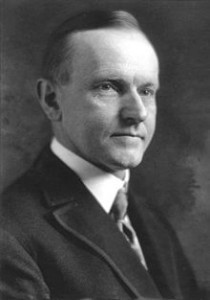David Meyer's Blog, page 12
February 14, 2013
Remnants of Lost City located in Peru?

“Finding the Lost City” (1898)
Attribution: Illustration by L.J. Bridgman
Source: The Lost City by Joseph E. Badger, Jr. (Digitized by Google Books)
Peru, like much of Central and South America, is a veritable treasure trove of lost history. This latest discovery is a lost temple located within the ruins at El Paraiso. However, it’s estimated to be 5,000 years old, making it 1,000 years older than the rest of the ruins. So, it appears to be from a lost city. Here’s more from BBC News:
Archaeologists in Peru say they have discovered a temple at the ancient site of El Paraiso, near the capital, Lima. Entry to the rectangular structure, estimated to be up to 5,000 years old, was via a narrow passageway, they say. At its centre, the archaeologists from Peru’s Ministry of Culture found a hearth which they believe was used to burn ceremonial offerings.
With 10 ruins, El Paraiso is one of the biggest archaeological sites in central Peru. The archaeologists found the structure, measuring 6.82m by 8.04m (22ft by 26ft), in the right wing of the main pyramid…
(See the rest at BBC News)
The post Remnants of Lost City located in Peru? appeared first on Guerrilla Explorer.
Related posts:
The Lost City of Cahokia?
A Lost Mayan City…in Georgia?
The Lost City of Calakmul

Bigfoot DNA: Is it Real?

Does Bigfoot really Exist?
Description: “Artistic depiction of Bigfoot.”
Attribution: “LeCire”
Source: Wikimedia Commons
Melba Ketchum released her eagerly-awaited Bigfoot DNA research paper today…and already it’s looking like a disaster. No academics (just forensic experts) were involved in the research. In order to get their paper published, they were forced to purchase and relaunch their own peer-reviewed journal. The paper, from what I understand, assumes Bigfoot exists and then goes about setting to prove its existence. Ultimately, it concludes with this comment: “The data conclusively proves that the Sasquatch exist as an extant hominin and are a direct maternal descendant of modern humans.” I’ve written about pseudoscience extensively. And from the looks of it, this is pseudoscience at its finest.
“Good science isn’t about proclaiming a hypothesis to be fact. Rather, it’s about doing everything you can to refute your own hypothesis. This requires creating unique and creative tests in order to rule out alternative theories. But even if these tests are done in a comprehensive fashion, an unassailed hypothesis still isn’t fact. It merely hasn’t been refuted yet. It might hold up under thousands of different tests. But all it takes is one test to send it to the dustbin of history.” ~ David Meyer, Monsters, Ghosts, & UFOs: Protosciences…or Pseudosciences?
The jury is still out on the actual data. But early word is that the results look more like contamination than anything else. Also, there seem to be a lack of rigorous tests done on the data. Here’s more on the Bigfoot DNA paper from idoubtit at Doubtful News:
Melba Ketchum’s long LONG awaited paper on Bigfoot DNA is published today. But you’re not going to see it.
Back in November, Ketchum announced her results: A team of scientists can verify that their 5-year long DNA study, currently under peer-review, confirms the existence of a novel hominin hybrid species, commonly called “Bigfoot” or “Sasquatch,” living in North America. Researchers’ extensive DNA sequencing suggests that the legendary Sasquatch is a human relative that arose approximately 15,000 years ago as a hybrid cross of modern Homo sapiens with an unknown primate species.
There was no paper to go along with the results. There is now a paper. With it comes a BOATLOAD of issues that leave this announcement less than spectacular…
(See the rest at Doubtful News)
The post Bigfoot DNA: Is it Real? appeared first on Guerrilla Explorer.
Related posts:
Searching for Bigfoot?
Bigfoot’s DNA?
Bigfoot Lives…!

February 13, 2013
SETI: The Search for Aliens comes up Short?

Will SETI ever find Aliens?
Description: Alien attacks the warship Thunderchild
Attribution: Illustration by Henrique Alvim Corrêa for The War of the Worlds by H.G. Wells (1906 Edition)
Source: Wikimedia Commons
via Wikimedia Commons
SETI’s latest search for aliens has come to a disappointing conclusion. Part of the problem is our own technology. We just aren’t that advanced. SETI is only capable of searching for Type II civilizations, who utilize and channel an energy source equivalent to the sun. So, yeah…there probably aren’t too many of those.
The other problem is even more challenging to overcome. Searching for aliens has always struck me as a long-shot. Sure, the galaxy is vast but so is time. And the odds of our civilization overlapping with a similar one (actually a much more advanced one) on a distant planet have got to be miniscule. Here’s more on the latest SETI search from Ian O’Neill at Discovery News:
In an effort to search for intelligent extraterrestrials, SETI astronomers have completed their first “directed” search. Unfortunately, it turned up no evidence of transmitting aliens. But that’s hardly surprising.
By focusing the Green Bank radio telescope, located in West Virginia, on stars hosting (candidate) exoplanets, it is hoped that one of those star systems may also play host to a sufficiently evolved alien race capable of transmitting radio signals into space. But in a study headed by ex-SETI chief Jill Tarter, the conclusion of this first attempt is blunt: “No signals of extraterrestrial origin were found.”
(See the rest at Discovery News)
The post SETI: The Search for Aliens comes up Short? appeared first on Guerrilla Explorer.
Related posts:
Astroforensics: The (New) Search for Alien Life
Tweeting…to Aliens?
The “Wow!” Signal?

President Lincoln: Hero or Monster?

President Lincoln: Hero or Monster?
Attribution: Alexander Gardner (November 8, 1863)
Source: Wikimedia Commons
President Lincoln is the centerpiece of American mythology. Public schools teach us to adore him. His brilliance and leadership are hailed by historians and politicians. President Lincoln saved the Union, freed the slaves, and inspired a nation. Check out these glowing words from Roy Klabin at PolicyMic:
Abraham Lincoln is one of America’s most celebrated presidents, having led us though our most troubled times. He was made great not by the circumstances that he found himself in, but the fortitude and honor with which he navigated them. The Civil War that erupted, and the manner in which Lincoln quelled it, showed us that however varied the ideas within our flourishing democracy may become, our strongest virtue comes in sustaining our unity and resolving our differences.
Fortitude? Honor? Please. Unfortunately, the truth is far uglier. President Lincoln’s quest to “save the union” cost an estimated 750,000 lives (including my third great grandfather). He wanted to force African-Americans to resettle in Central America. And there is no evidence he helped to pass the 13th Amendment, despite what Steven Spielberg would have you believe. In fact, the only 13th amendment President Lincoln tried to pass was the Corwin Amendment, which sought to prevent interference with slavery. Here’s more on the mythology surrounding President Lincoln and the 13th Amendment from Thomas DiLorenzo at LewRockwell.com:
Steven Spielberg’s new movie, Lincoln, is said to be based on several chapters of the book Team of Rivals by Doris Kearns-Goodwin, who was a consultant to Spielberg. The main theme of the movie is how clever, manipulative, conniving, scheming, lying, and underhanded Lincoln supposedly was in using his “political skills” to get the Thirteenth Amendment that legally ended slavery through the U.S. House of Representatives in the last months of his life. This entire story is what Lerone Bennett, Jr. the longtime executive editor of Ebony magazine and author of Forced into Glory: Abraham Lincoln’s White Dream, calls a “pleasant fiction.” It never happened…
There is no evidence that Lincoln provided any significant assistance in the passage of the Thirteenth Amendment in the House of Representatives in 1865, but there is evidence of his effectiveness in getting an earlier Thirteenth Amendment through the House and the Senate in 1861. This proposed amendment was known as the “Corwin Amendment,” named after Ohio Republican Congressman Thomas Corwin. It had passed both the Republican-controlled House and the Republican-dominated U.S. Senate on March 2, 1861, two days before Lincoln’s inauguration, and was sent to the states for ratification by Lincoln himself. The Corwin Amendment would have prohibited the federal government from ever interfering with Southern slavery…
(See the rest at LewRockwell.com)
The post President Lincoln: Hero or Monster? appeared first on Guerrilla Explorer.
Related posts:
President Lincoln’s Greatest Nemesis?
The Strange Case of President Zachary Taylor
The Lost Amendment?

The Comics Code: Tyranny Based on Lies?

Cover of “This Magazine is Haunted” (# 5): A typical example of horror comics that led to the War on Comics & the Comics Code
Attribution: Cover by Sheldon Moldoff
Source: Wikimedia Commons
New findings shows the research that lauched the War on Comics and the Comics Code was based on omissions, fabrications, and outright lies. That’s right, Dr. Fredric Wertham was the comics equivalent of Mike Bellesiles. We like to think of scientists and academics as impartial experts, who are only concerned with knowledge. Nothing could be further from the truth. Here’s more on the faulty foundations for the Comics Code by Dusty Rhodes at the University of Illinois:
Behavioral problems among teenagers and preteens can be blamed on the violence, sex and gore portrayed in the media marketed to them – that was the topic of televised public hearings held by the U.S. Senate Subcommittee on Juvenile Delinquency in 1954 to address the scourge of comic books. The hearings, which resulted in the decimation of what was an enormous comic book industry, had been inspired in large part by the book “Seduction of the Innocent,” by psychiatrist Fredric Wertham, based on his own case studies.
Wertham’s personal archives, however, show that the doctor revised children’s ages, distorted their quotes, omitted other causal factors and in general “played fast and loose with the data he gathered on comics,” according to an article by Carol Tilley, published in a recent issue of Information and Culture: A Journal of History.
“Lots of people have suspected for years that Wertham fudged his so-called clinical evidence in arguing against comics, but there’s been no proof,” Tilley said. “My research is the first definitive indication that he misrepresented and altered children’s own words about comics.”
(See the rest at the University of Illinois)
The post The Comics Code: Tyranny Based on Lies? appeared first on Guerrilla Explorer.
Related posts:
The Comics Code & the War on Comics?
The Pearl Harbor Code?
Happy Birthday Income Tax (Now, go away already!)

February 12, 2013
What did Nathan Hale Really Say?

“Last Words of Nathan Hale”
Attribution: Engraving by Alexander Hay Ritchie (1858)
Source: Wikimedia Commons
Nathan Hale, the famous American spy from the Revolutionary War, is famous for saying, “I only regret that I have but one life to give for my country.” There’s just one problem. He never said it. So, what did he really say? The answer is below, courtesy of an interview with Becky Akers conducted by American Revolution and Founding Era:
“What lessons can Americans today take from someone like Nathan Hale?”
That liberty is among God’s greatest gifts to us, more precious even than life.
Many folks mistake Nathan’s sacrifice for nationalism – the “my-country,-right-or-wrong” mentality. And while that’s tragic, it’s understandable, given the warped version of his speech on the gallows bequeathed to us. That famous line – “I only regret that I have but one life to give for my country” – actually originated with Capt. (later Gen.) William Hull, one of Nathan’s buddies from college. He heard an account of the execution from an eyewitness, which he included in his memoirs as an old man. And then he paraphrased – inaccurately – the quote from a report on Nathan’s death the Boston Chronicle published just six years after the hanging: “I am so satisfied with the cause in which I have engaged, that my only regret is that I have not more lives than one to offer in its service.” Obviously, Hull’s condensation packs a greater punch, but it also changes “cause [of liberty]” to “country” – an unfortunate and nationalistic rewrite.
(See the rest at American Revolution and Founding Era)
The post What did Nathan Hale Really Say? appeared first on Guerrilla Explorer.
Related posts:
Did Paul Revere Save the United States?
The “Wow!” Signal?
The Ship that Nearly Sank America

Protolanguages: Decoding Words from the Past?

Protolanguage Tree for the Hypothetical Proto-Mayan Language
Attribution: Régis Lachaume
Source: Wikimedia Commons
Protolanguages are hypothetical ancestors of modern languages. For example, modern Maya, as well as other ancient Mesoamerican scripts (Olmec, Zapotec, Classic Maya to name a few) are believed to have descended from an original language called Proto-Mayan (see chart). Needless to say, decoding protolanguages is a massive undertaking. Here’s more on a new computer system which appears to do the job quickly and with decent accuracy from the University of British Columbia:
University of British Columbia and Berkeley researchers have used a sophisticated new computer system to quickly reconstruct protolanguages – the rudimentary ancient tongues from which modern languages evolved.
The results, which are 85 per cent accurate when compared to the painstaking manual reconstructions performed by linguists, will be published next week in the Proceedings of the National Academy of Sciences.
“We’re hopeful our tool will revolutionize historical linguistics much the same way that statistical analysis and computer power revolutionized the study of evolutionary biology,” says UBC Assistant Prof. of Statistics Alexandre Bouchard-Côté, lead author of the study…
(See the rest at University of British Columbia)
The post Protolanguages: Decoding Words from the Past? appeared first on Guerrilla Explorer.
Related posts:
Lost Ancient Megalithic Architecture?
What’s inside the Lost Mayan Tomb?
December 21, 2012: Doomsday? Or just another Day?

The Drones are Coming

A MQ-9 Reaper Drone flies above Creech AFB (2008)
Attribution: Paul Ridgeway
Source: Wikimedia Commons
The drones are coming and not just by air either. In the next few years, an explosion of drones is expected to invade the U.S. by air, by water, and even underground. Here’s more from Robert Beckhusen at Wired.com:
It’s been 10 years since the Department of Homeland Security (DHS) started up operations. During that decade, DHS has moved to the forefront of funding and deploying the robots and drones that could be coming soon to a neighborhood near you.
DHS funds research and development for surveillance robots. It provides grant money by the hundreds of thousands to police agencies to buy their own. And sometimes it’s bought and deployed robots — for their skies, the ground and the waters — of its own, usually concentrated along the border. It’s not clear how many of those robots police operate, and law enforcement isn’t by any means the only domestic market for the ‘bots. But the trend lines point toward more robotic spy tools for law enforcement in more places — with more DHS cash.
But it’s not going to be simple. The Federal Aviation Administration is cautious about opening the skies to unmanned vehicles — so much so that Congress and the Obama administration ordered it to ease up on restrictions by 2015. But not all spy robots fly. DHS is also developing robots that resemble fish, and deploys tunnel-bots deep into drug-smuggling tunnels along the border…
(See the rest at Wired.com)
The post The Drones are Coming appeared first on Guerrilla Explorer.
Related posts:
Uploading…of the Human Mind?
The Supermoon is Coming!
Police State Update: Do Police Officers Lie?

February 11, 2013
Does America need the Constitution?

The First Page of the Constitution of the United States
Source: Wikimedia Commons
No, according to Louis Michael Seidman. He wants to keep the government but toss the Constitution, arguing that it was written by a very specific set of people from a very different time period. So, rather than debate the merits of an issue, we debate what people who died a long time ago would’ve thought about it. He also makes the very good point that we shouldn’t depend on the Constitution to secure our natural rights like freedom of speech.
The issue with the U.S. Constitution (and really any written document) is that it can be tortured to mean just about anything. And since government has a natural tendency to grab power, politicians can easily interpret the Constitution in order to do so (case examples: the Commerce and the Necessary and Proper Clauses).
As a restraint on government, the Constitution has proven remarkably ineffective. Then again, it’s not clear to me that a U.S. government without the Constitution would be much better. Here’s more from an interview with Seidman, conducted by Amy Crawford at Smithsonian Magazine:
What would we gain by giving up constitutional obligations?
It would improve deliberation and rhetoric about issues that divide us—gun control, for example. Now, to the horror of most of my friends, I am actually quite skeptical about gun control. But that’s a subject on which reasonable people can disagree. But what happens when you start thinking about constitutional obligations? All of the sudden the argument is not, “How are you going to enforce this? Would it actually prevent violence? Would it cause more violence?” The argument is about, “What exactly did the word ‘militia’ mean 200 years ago? What is the relationship between the ‘bear arms’ clause in the English Bill of Rights and the American Bill of Rights?”
Those are questions that historians ought to have some interest in, but they’re completely irrelevant to the issue of gun control in 21st century America. Without enlightening us, arguments of constitutionalism unnecessarily divide us. Now, all of the sudden, instead of talking about a policy decision that reasonable people could disagree about, we’re talking about whether one’s opponent is really an American, whether they are violating the document that defines us and creates us as a nation.
(See the rest at Smithsonian Magazine:
The post Does America need the Constitution? appeared first on Guerrilla Explorer.
Related posts:
When did People Arrive in Ancient America?
President Lincoln’s Greatest Nemesis?
How well does Congress reflect the People it “serves”?

Calvin Coolidge: Did he save the U.S. Economy?

Did Calvin Coolidge cause the Roaring 20s? The Great Depression? Perhaps, both?
Description: Calvin Coolidge (1923)
Attribution: John Garo
Source: Wikimedia Commons
Amity Shlaes is out with her latest book, Coolidge, a new take on the controversial presidency of Calvin Coolidge. Conservatives love Silent Cal, giving him full credit for the Roaring Twenties. Liberals hate him, believing his free market policies caused the Great Depression. Shlaes falls firmly in the former camp. Personally, I think he’s partly responsible for both. That’s because the Roaring Twenties and the Great Depression were caused by the same thing…rapid expansion of the money supply.
From mid-1921 to mid-1929, the money supply grew 61.8%, with much of that coming during Coolidge’s terms in office. All that money fueled a boom as businesses raced to invest it (aka the Roaring 20s). Eventually, too much money chased too few worthy investments. Poor businesses failed. The economy crashed and the money supply contracted. The Federal Reserve, just like today, mistakenly tried to reinflate the bubble in 1932 only to find itself unable to do so.
Still, Coolidge wasn’t a bad president. He cut the national debt and reduced tax rates. He avoided wars in Latin America. For more on Calvin Coolidge, see this interview with Amity Shlaes conducted by Ed Driscoll at PJ Media:
MR. DRISCOLL: The Forgotten Man helped to place FDR into context by focusing on many personal histories of the 1930s, beyond the palace intrigue of Capitol Hill. These days, whatever collective history we have of the 1920s seems to come from The Great Gatsby, The Untouchables,and TV shows like HBO’s Boardwalk Empire. How badly do people today misremember the decade of the 1920s ?
MS. SHLAES: We really misremember it and then you want to ask why. So Forgotten Man was about the misremembering of the 1930s. Coolidge is about the misremembering of the 1920s.
So the cliches you describe, and they’re fun and amusing, are that it was all a lie or about guns and alcohol, something illegal and contraband, corruption resulting from prohibition. Or it was all a lie; Gatsby wasn’t real wealth. He was an illusion. He was a shimmer in a champagne glass. Right?
So when you go back and look at the ’20s — this is the era of Coolidge, you see a lot of real growth. Things we would envy, we wish we could have, such as employment was often below five percent. When you wanted a job you got one. Wages rose in real terms. Not a lot but consistently. You can go back and look at that, even for unskilled workers. Well, what else — interest rates were pretty low. The budget was in surplus. We didn’t have a deficit. The federal debt was huge from World War I. We were bringing it down reliably…
(See the rest at PJ Media)
The post Calvin Coolidge: Did he save the U.S. Economy? appeared first on Guerrilla Explorer.
Related posts:
The Federal Reserve Conspiracy
Did Paul Revere Save the United States?
Grover Cleveland: The Greatest President?




